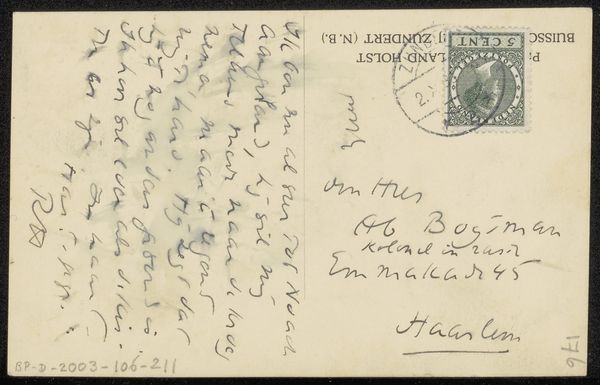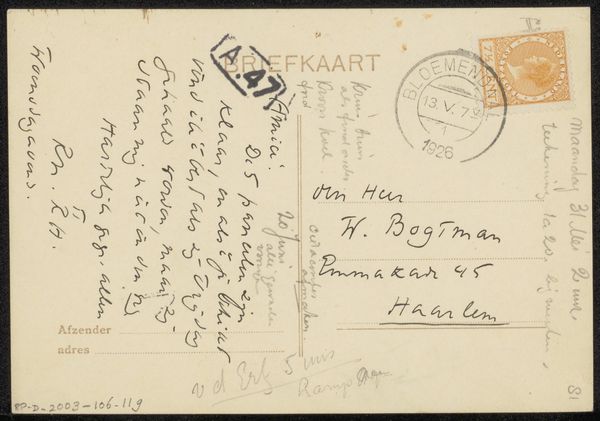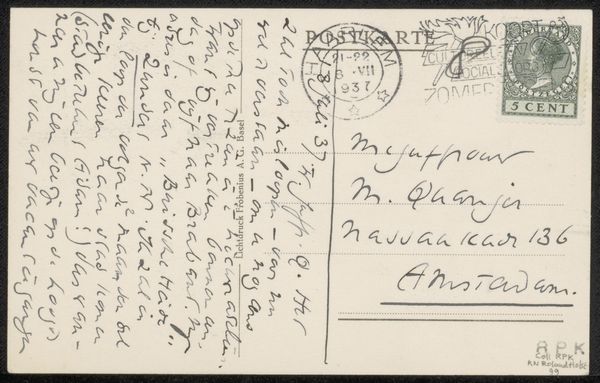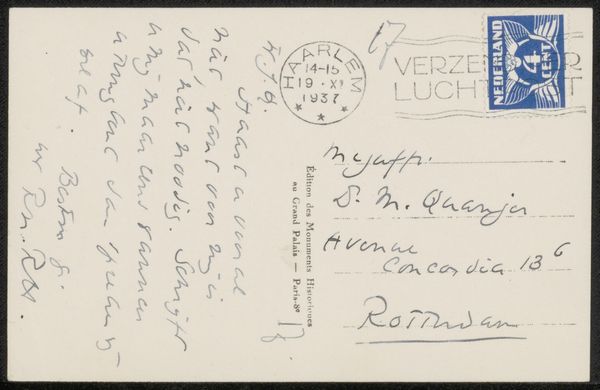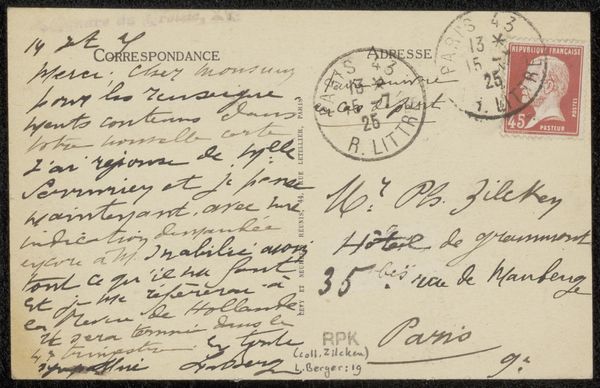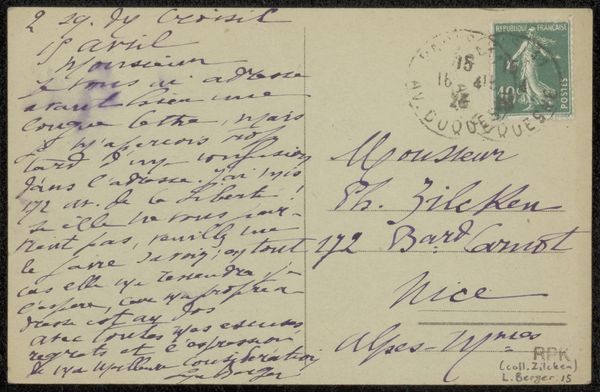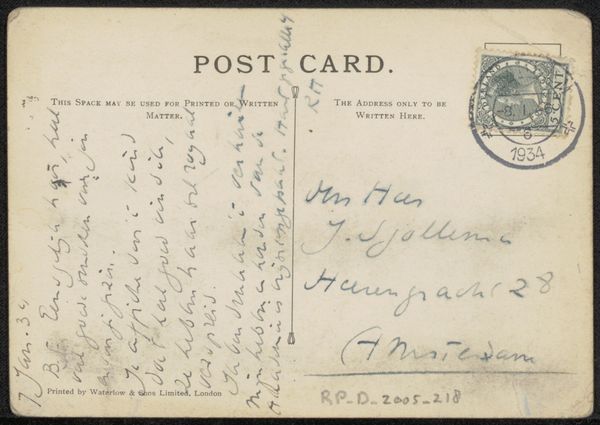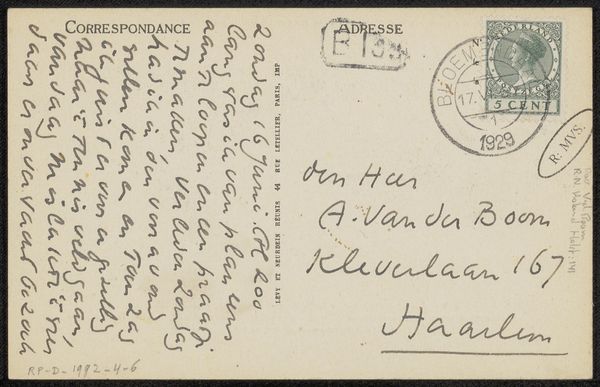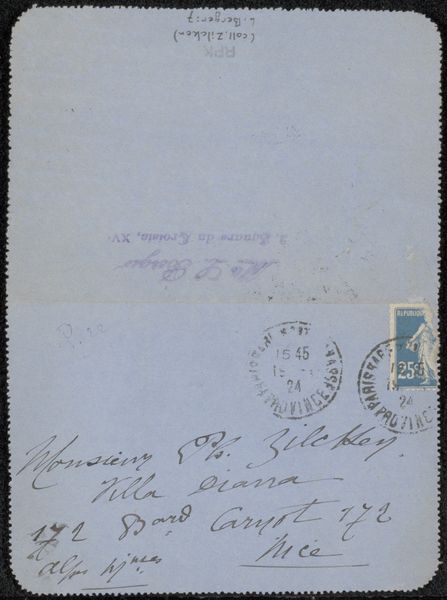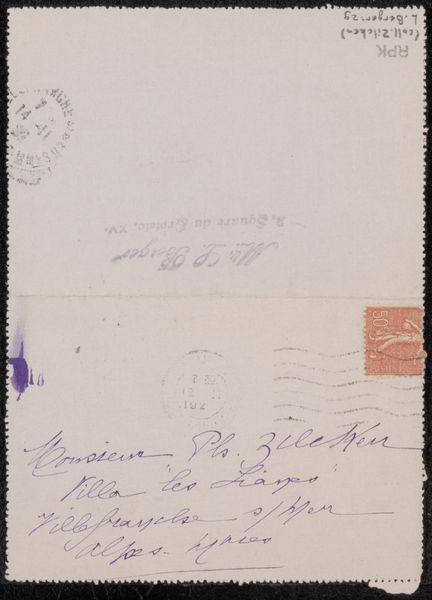
drawing, paper, ink, pen
#
drawing
#
comic strip sketch
#
hand drawn type
#
paper
#
personal sketchbook
#
ink
#
hand-drawn typeface
#
ink drawing experimentation
#
pen-ink sketch
#
pen work
#
sketchbook drawing
#
pen
#
storyboard and sketchbook work
#
sketchbook art
Copyright: Rijks Museum: Open Domain
Curator: Here we have Richard Nicolaüs Roland Holst's "Prentbiefkaart aan A. van der Boom," possibly from 1929. It's an ink drawing on paper. The card, addressed to a Mr. Van der Boom, seems to have travelled from Lugano, Switzerland. Editor: My first impression? Intimate. You see that personal touch right away. It's more than just information; the handmade nature invites you to consider the exchange between artist and recipient. Curator: Exactly! Think about the materials involved: pen, ink, paper—simple, readily available, but look at the detail Roland Holst manages. It transcends a simple functional card, doesn’t it? Editor: Indeed. I am intrigued by the sender mentioning Lugano. We also see postmarks with symbolic relevance—the hexagons forming the MAYR branding. This piece serves as a tiny, time-bound, material artifact, linking geographical places with a moment in history. Curator: The handwriting itself contributes. Note how he's squeezed so much information onto such a small surface, from updates to familiar references; the very act of inscription, the pressure of pen on paper, suggests the urgency and personal touch of letter writing. Editor: It is interesting to consider it also in the broader context of the Arts and Crafts movement, the importance of the hand, in an era of mechanization, cannot be disregarded; especially given Holland’s contribution in the area of typeface. This artistic focus reflects resistance to mass-production. Curator: Very insightful, yes. Roland Holst clearly considered the overall composition too, in every line. And that adds emotional value: what this artist does in relation to craft history, using those readily accessible instruments. Editor: In this sense, even the mistakes – or corrections – are useful visual anchors into its context; to connect us to the message—personal experience is always subjective. Curator: I concur; a perfect example of how material constraints don't have to limit artistic intention. The modest materials amplify the artwork and what that relationship may convey. Editor: Absolutely. It underlines the message that is a part of Roland Holst’s voice—both artistically and figuratively. A humble object capable of delivering immense emotional significance through a particular configuration of materials and message.
Comments
No comments
Be the first to comment and join the conversation on the ultimate creative platform.
